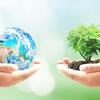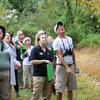Did you know that 79 percent of all plastics ever produced have accumulated in the natural environment or landfills? Two billion people live without any waste collection services at all. Sustainability is a global concern and it will take everyone doing their part to effect positive change. That change has to start right at home and in your communities!
Focusing on Sustainability
Temple University's commitment to sustainability has a profound impact on the health and quality of life of a large and diverse population within Temple and its surrounding community. To reach its goals for sustainability, Temple University has made a commitment to examining decisions for their environmental impact. The expected outcome of these steps is the creation of a culture and expectation for environmental action at all levels. The Office of Sustainability's mission is to lead the integration of sustainability into Temple University's curriculum, research, culture, building design and campus operations.





